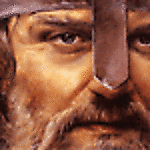Here are another couple of finds from the past few days. In a chase to find ever better images of one diorama I like, I keep stumbling across new distractions. Iíll have to stop browsing these photo sites, or Iíll actually fill my hard drive, which had originally seemed most unlikely.
This site has links to photo galleries from dozens of past European shows, and it seems to me that they often approach dioramas with a different sensibility than North Americans. YMMV
http://www.primeportal.net/scale_modeling.htm
The first dio is from the 17th Campinas Plastic Modeling Group Open convention, held at Valinhos, Brazil, almost one year ago.

It was photographed by Rato Marczak (ratomodeling.com) Ė thereís two other similar images in his gallery pages, as well as thousands of photos from other North and South American shows Ė not to mention his own excellent work, although heís clearly most interested in airplanes. While I like it, it also seems somewhat too orderly - sort of like the sailors in formation on the left side.
I would have liked it more if it wasnít so strictly squared off to the base. I can live with the sub not being supported for the full length, although itís probably not healthy for the hull - and on a sub, no less. What bothers me more it that thereís nothing to prevent it from rolling over. Thereís a single board fore and aft, but you donít need to look all that carefully to notice that theyíre not actually braced against anything. I would have expected something more like this:

Today I found a scene that appeals to me much more - with a lot of that due to the usage of multiple levels and a high degree of spatial awareness and design, which brings it into the realm of theater and set design. This is from Euro Militaire in 2009, and the photo is by Michael McLaughlin (MilitaryModeling site).

I later found a front-on shot - which tends to lose the depth somehow, as the layers are compressed, with some foreshortening going on. The image is by Heiner Sander, who built the diorama. His figures are interesting characters, but the clothes often seem a bit too smooth, shiny and plastic-y. Some enterprising company should create a paint that dries looking like fabric Ė or is it the modelerís responsibility to create that texture on the surface?

A half-dozen detail photos are here: http://tinyurl.com/mlhxfgd












